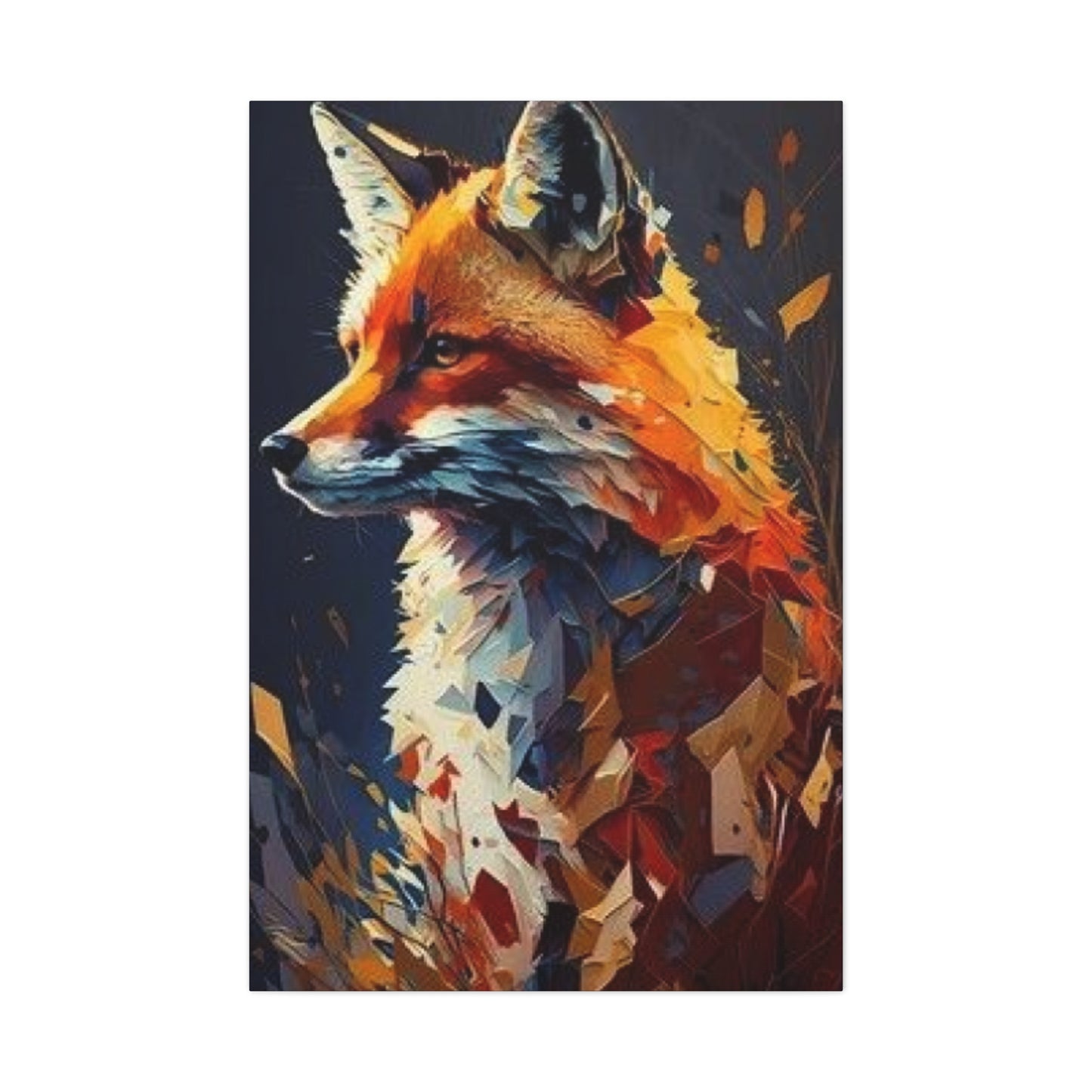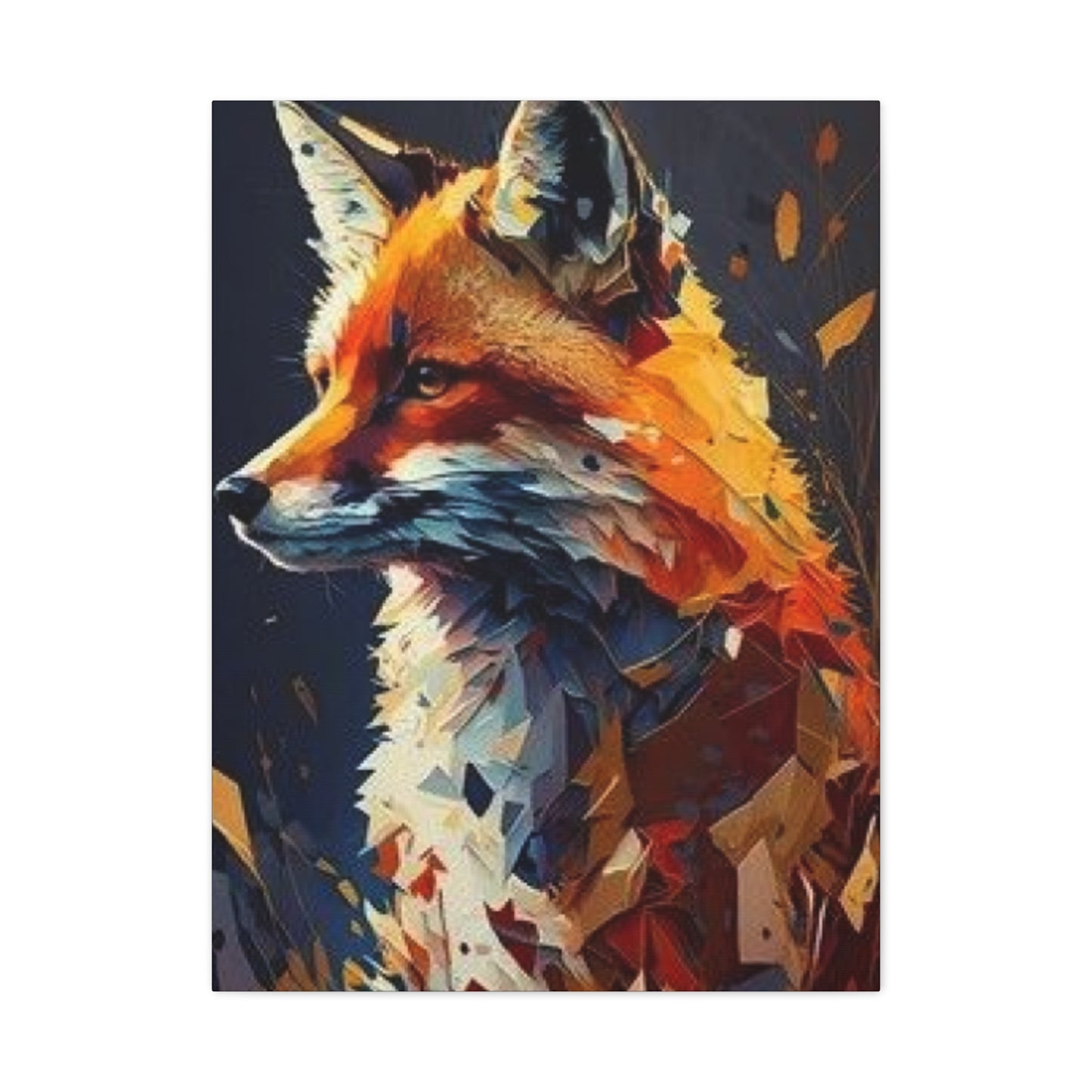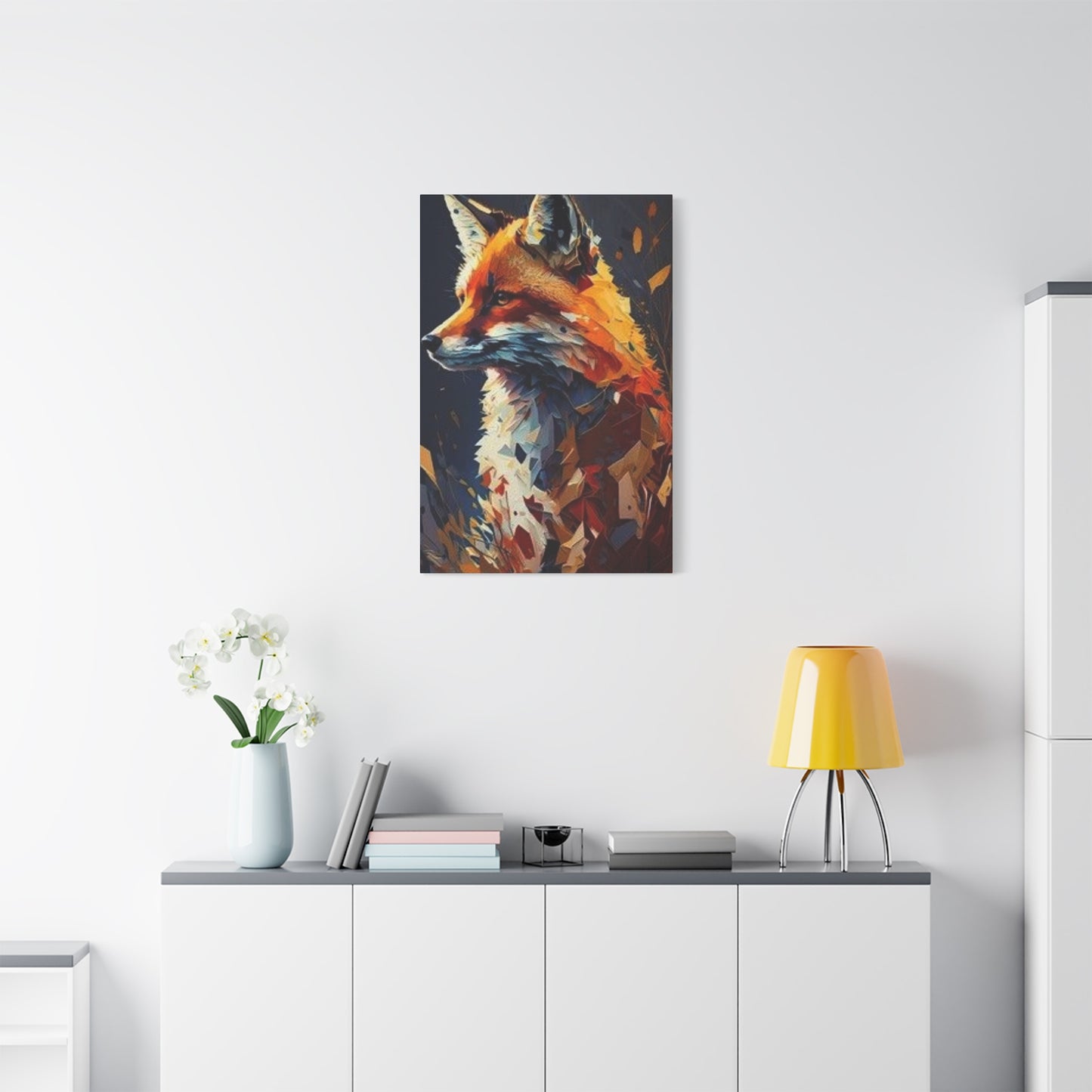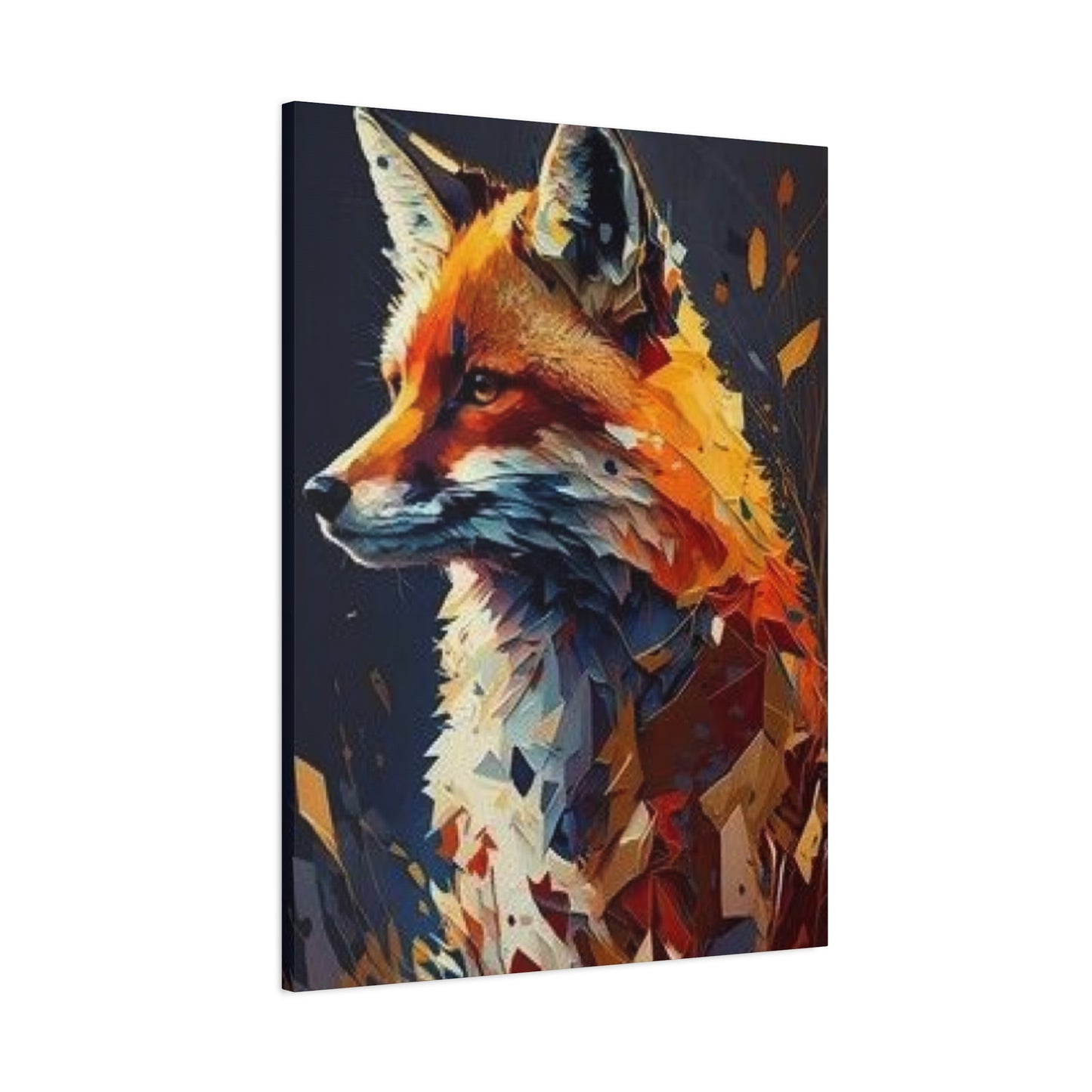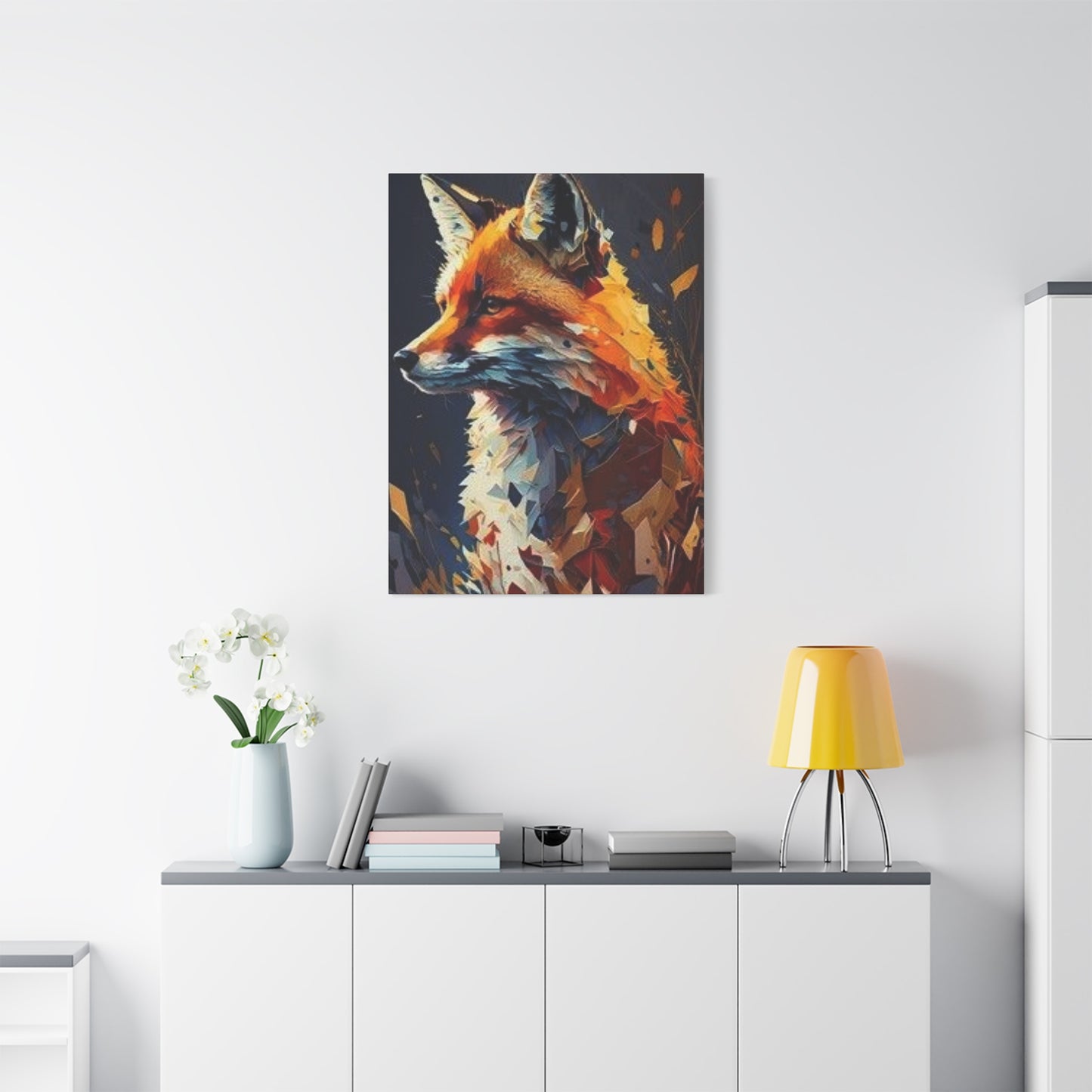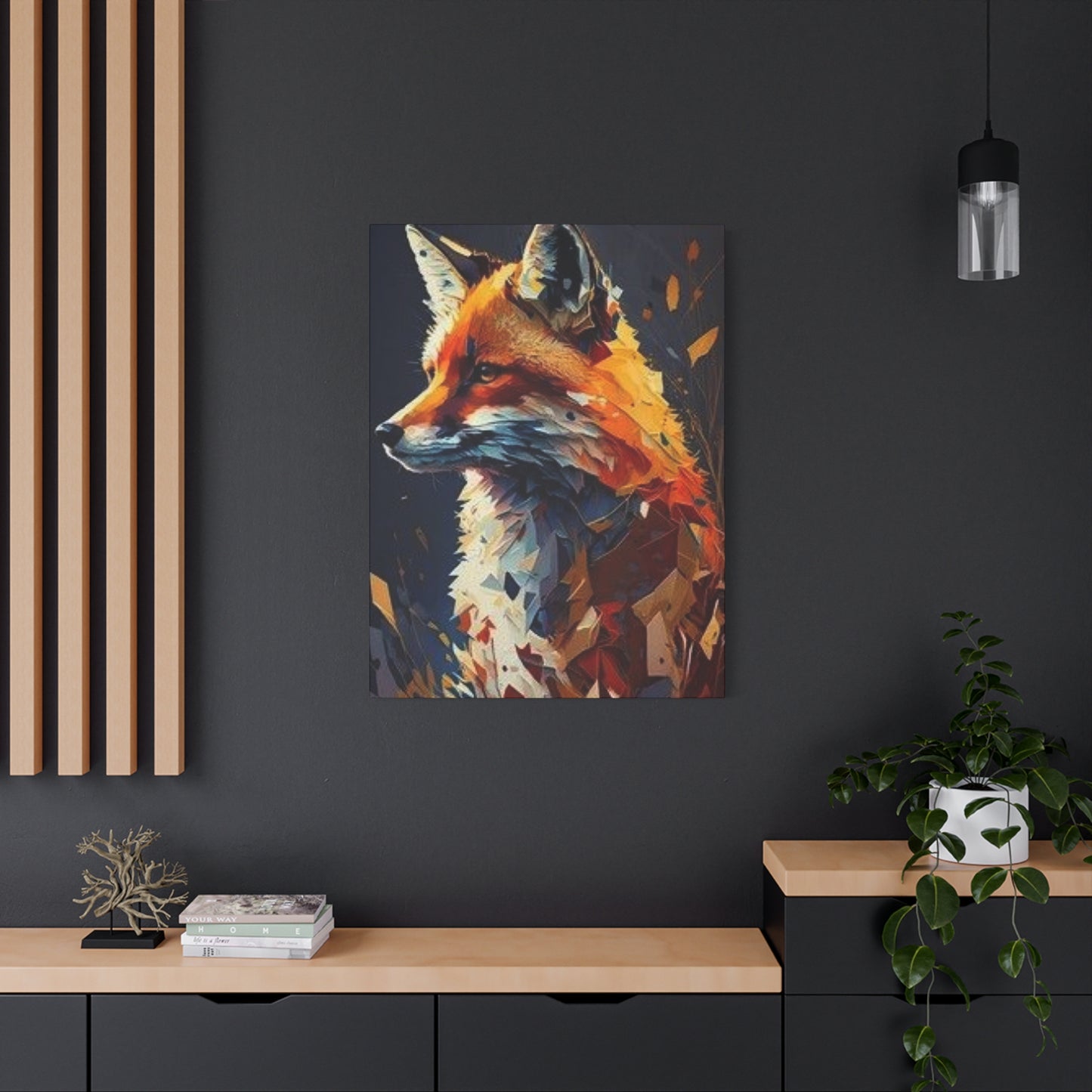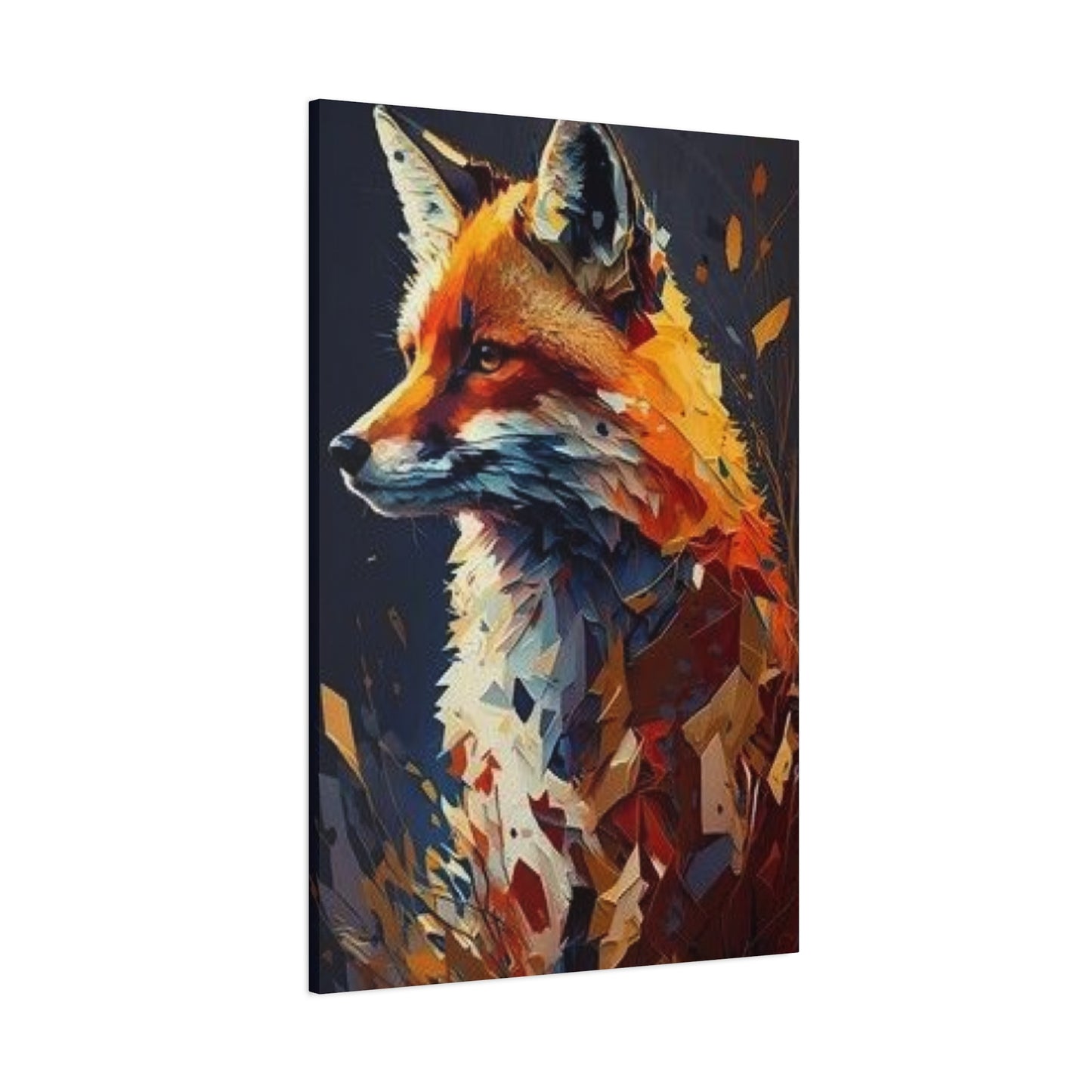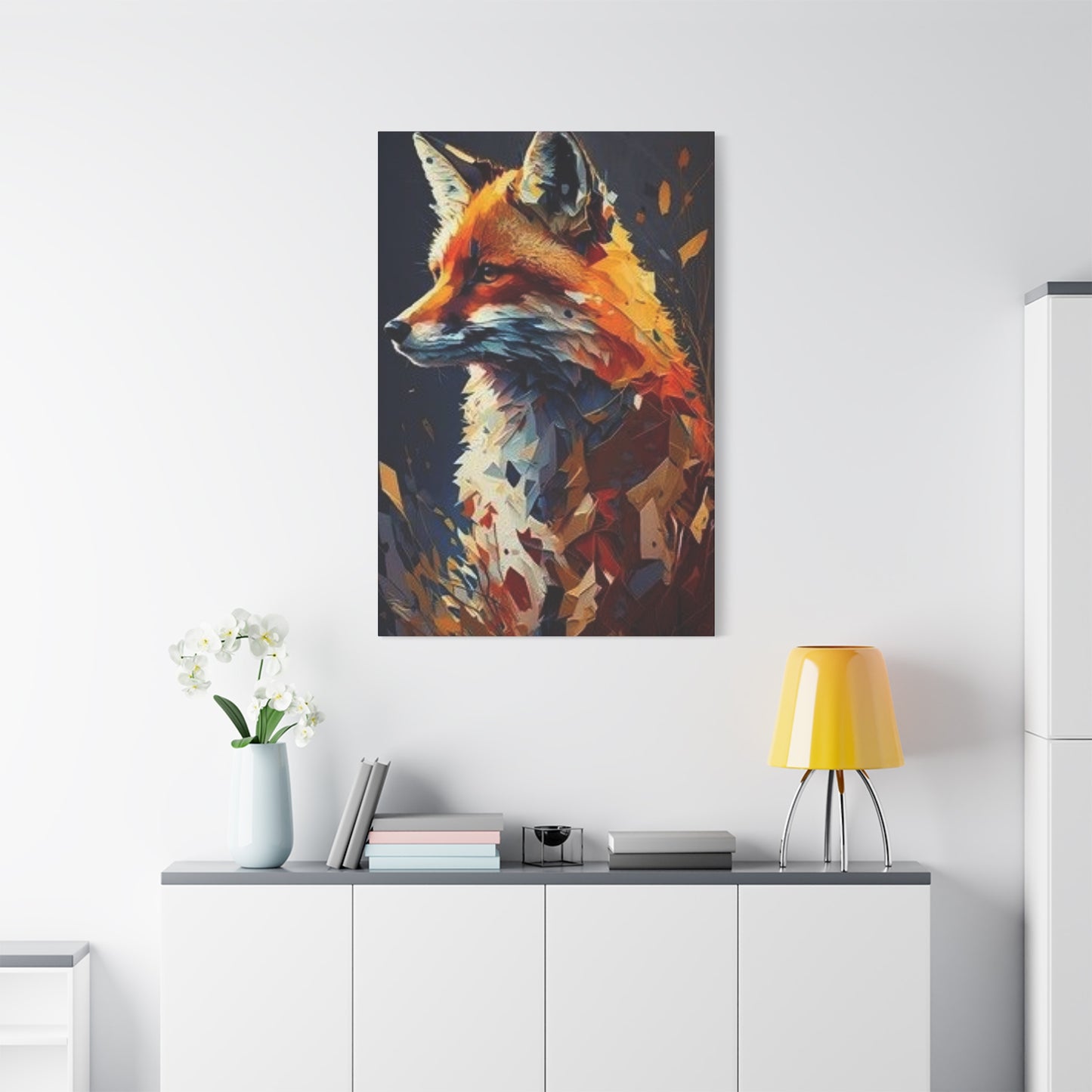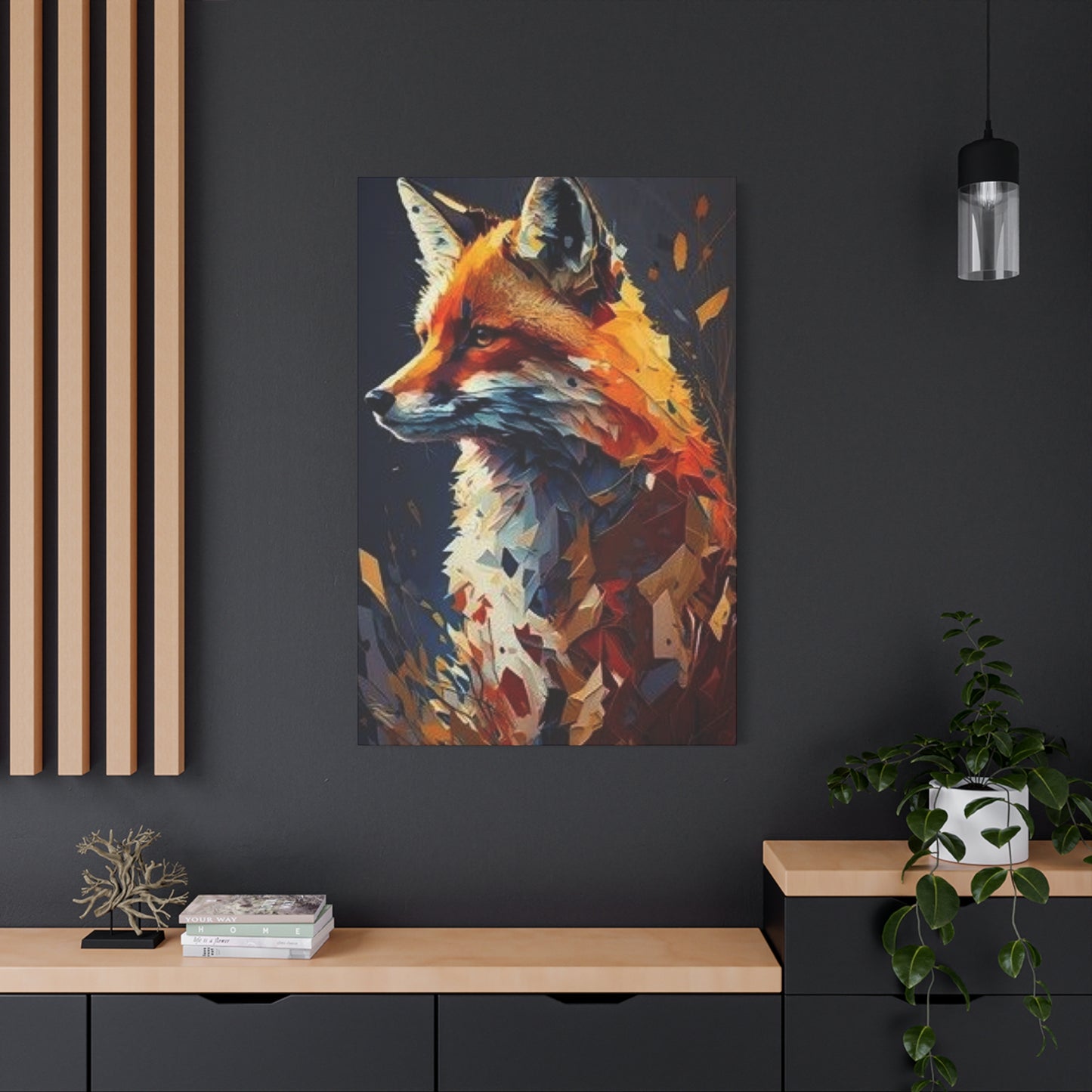Red Fox Wall Art: Bringing Wilderness Elegance Into Your Living Space
The red fox has long captivated human imagination with its striking russet coat, intelligent gaze, and graceful movements through forests and meadows. These magnificent creatures have become increasingly popular subjects in home décor, offering homeowners and interior design enthusiasts a way to bring the untamed beauty of nature indoors. Canvas prints featuring these cunning mammals provide an excellent opportunity to infuse any space with warmth, character, and a connection to the natural world. Whether you're drawn to their symbolic significance, aesthetic appeal, or simply their undeniable charm, incorporating artwork depicting these creatures into your living or working environment can transform the atmosphere entirely.
The growing interest in wildlife-themed interior design reflects a broader cultural shift toward biophilic design principles—the concept that humans possess an innate tendency to seek connections with nature and other forms of life. As urban living becomes increasingly common and our daily lives grow more disconnected from natural environments, many people find themselves craving visual reminders of the wilderness. Artwork featuring these auburn-coated animals serves this purpose beautifully, offering a window into forest ecosystems without requiring actual outdoor access. This trend has given rise to an extensive market for nature-inspired wall décor, with pieces showcasing these particular mammals standing out for their versatility and visual impact.
Beyond their aesthetic qualities, these creatures carry rich symbolic meanings across various cultures and traditions. In many societies, they represent intelligence, adaptability, quick thinking, and cunning—traits that resonate with modern audiences navigating complex contemporary life. Their image in artwork can serve as a daily reminder of these qualities, inspiring residents and visitors alike. Additionally, the distinctive coloration of these animals—ranging from deep burnt orange to lighter amber tones—makes them particularly well-suited for interior design purposes, as these warm hues complement a wide variety of color schemes and decorating styles.
The medium of canvas prints specifically offers several advantages for displaying wildlife imagery. Unlike traditional paper prints, canvas provides texture and depth that enhance the visual experience, creating an almost three-dimensional quality that draws viewers in. The fabric surface also eliminates glare issues common with glass-covered artwork, allowing the image to be appreciated from various angles and lighting conditions. Furthermore, gallery-wrapped canvas prints—where the image continues around the edges of the frame—create a contemporary, finished look that eliminates the need for additional framing, making installation straightforward and keeping costs manageable.
Red Fox Canvas Prints for Nature Lovers
For those who feel a deep connection to the natural world, few decorative choices express this passion as effectively as artwork featuring woodland creatures. These particular mammals hold special appeal for nature enthusiasts because they represent accessible wildlife—animals that, while wild, occasionally venture into suburban areas and can sometimes be observed in their natural habitats without extensive wilderness expeditions. This familiarity combined with their undeniable beauty creates an emotional resonance that purely exotic animals might not achieve. When nature lovers select pieces depicting these creatures for their homes, they're not simply choosing attractive decoration; they're making a statement about their values and interests.
The appeal for outdoor enthusiasts extends beyond simple aesthetic appreciation. Many people who enjoy hiking, wildlife photography, camping, or birdwatching have encountered these animals in natural settings, making artwork featuring them personally meaningful. A canvas print might trigger memories of a magical moment when one of these creatures crossed a trail at dawn, its coat gleaming in the early light, or an evening sighting in a meadow as shadows lengthened. These personal connections transform wall décor from mere decoration into conversation pieces laden with personal significance and cherished memories.
Additionally, for nature lovers who participate in conservation efforts or environmental advocacy, displaying wildlife artwork serves a broader purpose. It keeps the natural world visually present in daily life, serving as a constant reminder of what we stand to lose if conservation efforts fail. This visual advocacy can also educate visitors and family members who might be less connected to environmental issues, potentially inspiring greater awareness and appreciation for wildlife preservation. In this context, a canvas print becomes more than decoration—it becomes a form of gentle activism and education.
The variety available in this category of artwork ensures that even the most discerning nature enthusiast can find pieces that speak to their specific interests. Some prints capture these animals in action—mid-pounce while hunting, leaping through snow, or standing alert with ears pricked forward. These dynamic compositions appeal to those who appreciate the behavioral aspects of wildlife and the drama of natural predator-prey relationships. Other pieces take a more contemplative approach, showing the animals at rest, grooming, or simply observing their surroundings with characteristic intelligence. These quieter compositions might resonate more deeply with individuals who find peace and restoration in nature observation.
Seasonal variations in available artwork also appeal to nature lovers with specific preferences. Winter scenes showing these creatures against snow create striking visual contrast, their warm-toned coats standing out brilliantly against white backgrounds. Such images often capture the resilience and adaptation these animals demonstrate in harsh conditions, qualities that many outdoor enthusiasts particularly admire. Autumn compositions, featuring the animals amid fallen leaves or against forests ablaze with fall colors, emphasize the harmonious color relationships between the creatures and their environment. Spring and summer scenes tend toward lighter, more vibrant palettes, showing these mammals during breeding season or teaching their young—images that speak to themes of renewal and continuation.
For the dedicated nature lover, collecting multiple pieces depicting these animals in various seasons or behaviors can create a rotating display that changes with the calendar, keeping the home environment fresh while maintaining thematic consistency. This approach also satisfies the collector's instinct that many wildlife enthusiasts possess, creating opportunities to seek out works by different artists or featuring different subspecies. The educational aspect of such collections shouldn't be underestimated either—family members, especially children, can learn to recognize behavioral cues, seasonal coat changes, and habitat preferences through regular exposure to accurate artistic representations.
The scientific accuracy of wildlife artwork matters greatly to true nature enthusiasts. While artistic license has its place, those with genuine interest in these animals typically prefer representations that respect anatomical correctness, realistic proportions, and accurate behavioral depiction. Artists who study their subjects thoroughly and work from actual wildlife observations or quality photographs produce work that resonates more authentically with knowledgeable viewers. This attention to detail distinguishes serious wildlife art from cartoon-like or overly anthropomorphized representations, which might appeal to general audiences but fail to satisfy those with deeper naturalist interests.
How Red Fox Art Complements Any Room
One of the most remarkable qualities of artwork featuring these russet-colored mammals is its exceptional versatility in complementing diverse interior design schemes. The natural coloration of these animals—predominantly warm oranges, reds, and browns with white and black accents—contains a balanced palette that harmonizes with an extensive range of decorating styles and color schemes. This adaptability makes such artwork an excellent choice for homeowners who may periodically update their décor without wanting to replace major art pieces, as the imagery typically remains aesthetically appropriate even as surrounding elements change.
In rooms decorated with neutral color schemes—grays, beiges, whites, and taupes—artwork depicting these creatures provides essential warmth and visual interest without overwhelming the space. The organic orange and brown tones introduce natural color in measured amounts, creating focal points that draw the eye while maintaining the calm, sophisticated atmosphere that neutral palettes establish. This approach works particularly well in contemporary and minimalist interiors, where too much color might conflict with the design philosophy, but some warmth is necessary to prevent spaces from feeling cold or unwelcoming. A single well-placed canvas can transform a monochromatic room from sterile to inviting.
For spaces decorated in earth tone palettes, these pieces create harmonious relationships through color echo. When walls, furniture, or accessories already incorporate browns, terracottas, rusts, or warm grays, artwork featuring these animals reinforces the established color story while adding visual complexity through the detailed rendering of fur, expression, and environmental elements. This cohesive approach strengthens the overall design concept, making the space feel intentionally curated rather than haphazardly assembled. Interior designers often recommend this technique for creating sophisticated, layered looks that feel both purposeful and comfortable.
Surprisingly, these warm-toned subjects also complement cooler color schemes quite effectively. In rooms decorated with blues, greens, or purples, the contrasting warmth of the animal's coat creates visual excitement through complementary color relationships. This juxtaposition prevents cool-toned rooms from feeling too austere while adding dimensional interest. The natural green tones often present in woodland habitat backgrounds within the artwork help bridge the temperature gap between the subject and cool-colored interiors, creating visual coherence despite the contrasting palettes.
The subject matter itself carries universal appeal that transcends specific decorating trends. Unlike highly stylized or theme-specific artwork that might date quickly or limit future décor options, wildlife imagery maintains timeless relevance. These creatures have fascinated humans throughout history and across cultures, ensuring their depiction never feels like a passing fad. This timelessness protects your investment in quality artwork, as pieces remain aesthetically appropriate regardless of whether current trends favor farmhouse style, mid-century modern, Scandinavian minimalism, or eclectic maximalism.
Scale and composition options within this category further enhance its adaptability to various rooms. Large-scale pieces work beautifully as statement focal points in spacious areas like living rooms, dining rooms, or primary bedrooms, where they can command attention and anchor furniture arrangements. Medium-sized prints suit secondary spaces like guest bedrooms, home offices, or reading nooks, providing visual interest without dominating. Smaller works or collections of coordinating pieces can enliven hallways, powder rooms, or awkward wall spaces that need attention but can't accommodate larger artwork. This range ensures that regardless of your available wall space, appropriately scaled options exist.
The style diversity within wildlife artwork also contributes to its broad compatibility. Photorealistic renderings appeal to those who prefer traditional or contemporary décor and appreciate technical mastery. More painterly interpretations, whether executed in oils, watercolors, or acrylics, suit spaces with artistic or bohemian leanings. Abstract or stylized representations of these animals can complement ultra-modern or avant-garde interiors where realistic wildlife imagery might feel discordant. Digital art and mixed-media approaches offer yet more options, ensuring that no matter your aesthetic preferences, you'll find work that speaks to both your appreciation for these animals and your design sensibilities.
The Bold Appeal of Red Fox Wall Art
There exists an undeniable boldness in choosing wildlife imagery for home décor, particularly when that wildlife features creatures as visually striking as these russet-coated mammals. Unlike safe, conventional decorating choices—generic landscapes, abstract patterns, or mass-produced prints—selecting artwork that features these animals makes a definite aesthetic statement. This boldness doesn't necessarily mean loud or aggressive; rather, it reflects confidence in personal taste and a willingness to choose distinctive pieces that reflect genuine interests rather than following purely trend-driven decisions.
The inherent drama in quality representations of these creatures contributes significantly to their bold appeal. Artists who successfully capture these animals typically emphasize characteristics that make them compelling subjects: the intensity of their gaze, the alertness of their posture, the luxurious texture of their coats, and the inherent wildness that distinguishes them from domesticated animals. These elements create artwork with presence—pieces that demand attention and reward closer inspection. When guests enter a room featuring such work, their eyes naturally gravitate toward it, often prompting comments and questions that demonstrate the piece's effectiveness as a conversation catalyst.
Color psychology supports the bold impact these pieces create. The warm spectrum dominated by oranges, reds, and browns—the signature colors of these animals—stimulates emotional responses associated with energy, enthusiasm, warmth, and earthiness. These are active colors that engage viewers rather than receding into backgrounds. The contrast between the bright coat and darker environmental elements or shadowy backgrounds in many compositions further amplifies visual impact, creating depth and dimensionality that flatter panels cannot achieve. This chromatic boldness enlivens spaces without requiring the aggressive saturation of purely abstract color-field art.
The wildness factor itself represents a bold decorating choice in domesticated environments. Our homes are carefully controlled spaces where we regulate temperature, lighting, cleanliness, and order—the antithesis of wilderness. Introducing imagery of truly wild animals creates productive tension between civilization and nature, the tamed and the untamed. This juxtaposition can be intellectually and emotionally stimulating, reminding inhabitants that beyond our walls exists a complex natural world operating by different rules. For many, this connection to wildness feels increasingly important as technology and urbanization distance us from natural environments.
Choosing to display these particular animals also carries symbolic boldness. Their reputation for cleverness, adaptability, and survival skills resonates with many homeowners who see themselves as resourceful and intelligent problem-solvers. By association, displaying their imagery can be interpreted as an expression of these valued traits. Unlike safer animal choices—perhaps pastoral sheep or tranquil deer—these creatures carry associations with cunning and strategy, suggesting that the homeowner appreciates mental agility and isn't afraid to acknowledge life's competitive aspects. This symbolic dimension adds psychological complexity to what might otherwise be purely decorative choices.
The size options available in canvas prints allow homeowners to calibrate exactly how bold they want their statement to be. Oversized pieces measuring several feet across create undeniable focal points that dominate walls and define entire rooms' character. These dramatic installations work particularly well in spacious areas with high ceilings where proportionally substantial artwork is necessary to maintain visual balance. Medium-sized works offer boldness in more measured doses, providing distinctive character without overwhelming modest spaces. Even smaller pieces can make bold statements when displayed in unexpected locations or in carefully curated gallery arrangements where multiple coordinating works create collective impact.
The technical quality of professional canvas prints enhances their bold appeal. High-resolution printing technology reproduces fine details—individual fur strands, subtle gradations in eye color, environmental textures—with remarkable fidelity. This technical excellence ensures that even large-scale prints maintain visual integrity, with no pixelation or blurriness to undermine their impact. When combined with quality canvas materials and professional stretching over substantial frames, these pieces achieve a physical presence and substantiality that commands respect and justifies their status as serious art rather than mere decoration.
Adding Warmth with Red Fox Canvas Prints
Interior designers and homeowners alike recognize that true warmth in living spaces extends beyond physical temperature to encompass emotional and visual comfort. Creating environments that feel welcoming, cozy, and nurturing requires careful attention to color, texture, lighting, and thematic elements—all areas where artwork featuring these amber-coated creatures excels. The inherent warmth these pieces bring makes them particularly valuable in spaces where comfort and relaxation are priorities, such as living rooms, bedrooms, reading areas, and family gathering spots.
The color palette associated with these animals naturally generates warmth through its dominance of colors from the warm side of the spectrum. The signature burnt orange and russet tones of their coats register psychologically as warm hues, creating subconscious associations with fire, autumn, sunset, and other comforting natural phenomena. When these colors appear in artwork, they radiate similar warmth throughout the surrounding space, influencing how the entire room feels. This effect proves especially valuable in north-facing rooms or spaces with cool artificial lighting, where introducing warm-toned artwork can counterbalance chilly undertones and create more inviting environments.
Beyond pure color theory, the subject matter itself contributes to perceived warmth through associations with the natural world. For many people, wildlife and wilderness evoke feelings of comfort, peace, and belonging—particularly when the wildlife in question includes mammals with whom we can identify on some level. These creatures, with their family structures, expressive faces, and relatable behaviors, create empathetic connections that cold, abstract art cannot achieve. This emotional resonance translates into rooms that feel more personally meaningful and therefore warmer in the deepest sense.
The textural quality of fur, as depicted in skilled artwork, adds another dimension of warmth. Our brains recognize fur as insulation, protection from cold—warmth made visible. Even though we're viewing a two-dimensional representation, quality art creates such convincing illusions of texture that viewers can almost feel the soft, dense coat. This tactile suggestion reinforces warmth on a subconscious level. Artists who excel at rendering fur with convincing detail and dimensionality create work with particularly strong warming effects, as the visual texture becomes nearly palpable.
Seasonal imagery affects warmth perception as well. Autumn scenes featuring these animals amid falling leaves or preparing for winter create cozy, nostalgic feelings associated with seasonal transitions and the nesting instinct that cooler weather triggers. Winter compositions showing the creatures against snow emphasize their warmth through contrast—we recognize their ability to thrive in cold conditions, and their obvious comfort in that environment paradoxically makes us feel warmer. Spring and summer scenes contribute warmth through their associations with renewal, growth, and the return of comfortable weather after winter's harshness.
The versatility of these pieces in layered decorating schemes amplifies their warming effect. Because the natural colors coordinate beautifully with common warm-toned décor elements—wood furniture, leather upholstery, wool textiles, copper accents—they integrate seamlessly into rooms already designed for comfort. The artwork reinforces existing warming elements rather than working in isolation, creating cumulative effects stronger than any single element could achieve alone. This synergy represents sophisticated decorating that considers how components interact rather than treating them as independent choices.
Lighting considerations further enhance the warming potential of these pieces. When illuminated by warm-toned light sources—incandescent bulbs, warm LEDs, or natural light during golden hour—the oranges and reds in the artwork literally glow, intensifying their visual warmth. This interaction between lighting and art creates dynamic experiences where the piece appears to change character throughout the day or as artificial lighting varies. Homeowners can maximize this effect through strategic lighting design, perhaps adding picture lights or positioning table lamps to cast flattering illumination on the artwork during evening hours when warmth is most psychologically important.
Where to Hang Your Red Fox Art
Strategic placement of artwork significantly influences its impact and the overall effectiveness of interior design schemes. While personal preference ultimately guides these decisions, understanding basic principles of art placement helps ensure these pieces achieve their full potential in your space. The location you choose affects not only how the artwork looks but also how it functions within the room—whether as focal point, complementary element, conversation piece, or personal sanctuary marker.
Living rooms represent perhaps the most traditional and effective location for significant wildlife artwork. These communal spaces where families gather and guests are entertained benefit from conversation-worthy pieces that reflect homeowners' interests and personalities. Above the sofa stands as the classic placement option, creating a natural focal point that anchors seating arrangements and provides visual interest for those seated opposite. When selecting artwork for this position, ensure the piece or arrangement spans approximately two-thirds to three-quarters of the furniture's width to maintain proper proportional relationships. The bottom edge should hang eight to ten inches above the sofa back, close enough to create visual connection but high enough to avoid being obscured by occupants or decorative pillows.
Dining rooms offer excellent opportunities for wildlife artwork, as these spaces benefit from interesting visuals that enhance meal experiences and dinner party conversations. Above a sideboard, buffet, or serving table provides an ideal location where the art remains visible during meals without competing with table settings or floral arrangements. Alternatively, on the wall opposite the table's head creates a view for the host and draws the eye through the space. In formal dining rooms, consider how the artwork's mood aligns with the entertaining you do—more dramatic, intense pieces suit sophisticated dinner parties, while gentler compositions work better for casual family meals.
Bedroom placement deserves thoughtful consideration since these private spaces serve different purposes than public areas. Above the bed remains the most common choice, creating a focal point visible upon entering and establishing the room's character. However, unlike living rooms where bold statements often succeed, bedrooms benefit from artwork that promotes relaxation and tranquility. Consider pieces showing these creatures in peaceful poses or softer artistic interpretations rather than intense, action-oriented compositions. The wall opposite the bed also works well, providing something beautiful to contemplate while lying in bed but avoiding the potential feng shui concerns some people have about animal imagery above where they sleep.
Home offices present opportunities to incorporate wildlife artwork in ways that enhance productivity and creativity. Behind the desk creates a professional backdrop for video calls while providing inspirational imagery during breaks from screen focus. To the side of your workspace allows you to turn toward the piece when seeking creative inspiration or taking mental breaks, while across from your desk creates a view that draws your gaze upward during contemplative moments. Consider how the artwork's symbolism might influence your work mindset—these animals' associations with cleverness and adaptability can serve as daily reminders of professional qualities you wish to cultivate.
Hallways and entryways, often overlooked in decorating schemes, provide perfect opportunities for wildlife artwork that creates welcoming first impressions or transforms transitional spaces into gallery-like experiences. A striking piece near the entry establishes your home's character immediately, signaling to guests that they're entering a space where nature and artistic quality are valued. In hallways, consider creating gallery walls with multiple coordinating pieces or spacing individual works along the length to guide movement through the home while preventing blank walls from creating tunnel-like feelings.
Unconventional locations often yield surprisingly effective results. Bathrooms, especially larger powder rooms or primary baths, benefit from artwork that creates spa-like, nature-connected atmospheres. Libraries and reading nooks become more inviting with wildlife companions keeping watch as you lose yourself in books. Even kitchens, though traditionally decorated with food-themed art, can accommodate nature imagery that reminds us of the ultimate source of nourishment and our connection to natural cycles. These unexpected placements demonstrate design confidence and create memorable spaces that transcend conventional decorating.
Height considerations matter significantly regardless of location. The standard guideline suggests hanging artwork so that its center sits at eye level, typically about 57 to 60 inches from the floor—the average height used in museums and galleries. However, adjust this rule based on ceiling height, furniture relationships, and viewer circumstances. In spaces where people are usually seated, lower hanging heights prevent awkward neck craning. With high ceilings, raising artwork slightly prevents it from appearing to float in vast expanses of wall. Always step back to evaluate placement from typical viewing distances and positions before finalizing installation.
Red Fox Prints for Modern Homes
Contemporary home design emphasizes clean lines, minimal clutter, intentional use of color, and carefully curated decorative elements. Within this aesthetic framework, artwork featuring these russet-coated creatures surprisingly fits beautifully, despite wildlife imagery sometimes being associated with more traditional decorating approaches. The key lies in selecting pieces and presentation styles that honor modern design principles while capitalizing on the natural appeal of these subjects. When thoughtfully chosen and properly displayed, these prints enhance modern interiors without compromising their fundamental character.
The minimalist principle of quality over quantity aligns perfectly with investing in museum-quality wildlife prints. Rather than filling walls with numerous lesser pieces, modern design favors fewer, more substantial works that command attention and reflect genuine artistic merit. A single large-scale canvas featuring these animals in striking composition can satisfy the modern preference for statement pieces while introducing organic warmth that prevents minimalist spaces from feeling cold or unwelcoming. This approach demonstrates the sophisticated restraint central to successful contemporary design.
Frameless gallery-wrapped canvas particularly suits modern aesthetics. This presentation style, where the image continues around the stretched canvas edges rather than being confined within traditional frames, creates clean, contemporary finished looks that integrate seamlessly with modern architecture and furnishings. The absence of ornate framing eliminates visual competition between decorative frame elements and the artwork itself, maintaining the uncluttered sight lines that modern design prizes. The three-dimensional quality of stretched canvas also adds architectural interest without introducing the fussiness that detailed frames might create.
Color relationships between these animals and modern palettes work remarkably well when approached thoughtfully. Modern design often employs neutral backgrounds—whites, grays, blacks—punctuated by carefully chosen accent colors. The warm oranges and browns of these creatures function beautifully as natural accent tones against neutral backdrops, providing organic color that feels less contrived than purely decorative accent pieces. This approach introduces warmth and visual interest while maintaining the restrained color discipline that characterizes successful modern interiors. The natural origins of these colors also align with the increasingly popular modern preference for biophilic design elements.
Photographic or photorealistic representations of these animals often suit modern sensibilities better than traditional painterly approaches. The precision and clarity of high-quality wildlife photography or hyperrealistic art align with modern design's appreciation for technical excellence and honest material expression. These crisp, detailed renderings feel contemporary rather than nostalgic, suggesting documentary authenticity rather than romantic interpretation. Black-and-white or near-monochromatic images of these traditionally colorful subjects create particularly striking modern statements, abstracting the creatures into studies of form, texture, and light while maintaining their essential character.
Geometric considerations in composition selection support modern placement. Pieces with strong horizontal emphasis complement the linear qualities of modern furniture and architecture, while vertical formats echo the clean vertical lines often present in contemporary spaces. Square formats increasingly popular in modern art also work well, particularly in grid arrangements of multiple coordinating pieces. The subject positioning within the frame matters too—modern sensibilities often favor asymmetrical compositions with generous negative space over traditional centered, frame-filling approaches. These compositional qualities create visual harmony with modern design principles.
Installation techniques for modern homes might differ from traditional approaches. Floating mounts that suspend artwork slightly away from walls create contemporary shadow effects and emphasize the work's three-dimensional presence. Gallery rails or picture ledges allow for flexible arrangement and easy rotation of pieces, supporting the modern preference for adaptable, evolving spaces rather than permanent, static installations. These systems also accommodate the collector mentality of acquiring multiple pieces over time and adjusting displays seasonally or as tastes evolve.
The thematic authenticity of wildlife subjects serves modern design's rejection of superficial decoration in favor of meaningful content. Modern homeowners typically prefer artwork that reflects genuine interests and values rather than generic, mass-produced decoration chosen purely for color coordination. Selecting these pieces because of authentic appreciation for wildlife and nature demonstrates the kind of purposeful decision-making that underlies successful modern design. This authenticity creates spaces that feel personally meaningful rather than simply styled, a distinction that separates truly successful modern homes from those that merely follow trends.
Incorporating Red Fox Art in Your Office
Professional workspace design increasingly recognizes that environment significantly impacts productivity, creativity, job satisfaction, and overall wellbeing. The traditional corporate aesthetic of purely functional, personality-free offices is giving way to more thoughtful approaches that acknowledge workers as whole people with individual interests and needs. Within this evolving context, incorporating wildlife artwork into office environments offers numerous benefits beyond mere decoration, contributing to psychological comfort, environmental connection, and personal expression in spaces where we spend substantial portions of our lives.
The psychological impact of nature imagery in work environments has been extensively documented through environmental psychology research. Studies consistently demonstrate that visual access to nature—whether through windows or nature-themed artwork—reduces stress, enhances focus, improves mood, and increases overall job satisfaction. For those working in windowless offices or urban settings with limited natural views, artwork featuring these woodland creatures provides crucial nature connection that helps counteract the psychological strain of artificial, nature-deprived environments. Even representations of nature trigger beneficial responses in our evolutionary-wired brains that crave environmental diversity.
The symbolic associations these animals carry make them particularly appropriate for professional settings. Their reputation for intelligence, quick thinking, adaptability, and strategic problem-solving resonates with professional values and aspirations. Displaying their imagery can function as a subtle daily reminder of qualities you wish to embody in your work—cunning in navigating office politics, adaptability in responding to changing demands, strategic thinking in planning projects, and the persistence these creatures show in pursuing goals. This symbolic dimension transforms the artwork from mere decoration into motivational tool.
Home office environments benefit especially from artwork that establishes boundaries between professional and personal space. When working from home, visual markers help transition mentally into work mode and define areas as professional territory rather than simply another domestic space. A distinctive piece above your desk or on the wall you face during video calls creates this psychological boundary while simultaneously expressing personality in ways that corporate offices might not permit. The wildlife subject matter strikes an ideal balance—professional enough for client-facing video calls yet personal enough to make the space feel like yours rather than a generic work station.
Placement considerations in offices differ somewhat from residential spaces due to functional requirements. Behind your seated position creates impressive backdrops for video conferences, projecting professionalism while displaying personal interests. Many remote workers have discovered that visually interesting backgrounds generate positive comments from colleagues and clients, serving as conversation starters that build rapport. However, ensure the artwork isn't so visually demanding that it distracts meeting participants from your face and message. Pieces with subtle, out-of-focus backgrounds that emphasize the subject work particularly well for this purpose.
To the side of your workspace or on walls you face during breaks serves different functions—providing visual respite during work pauses and something beautiful to rest your eyes on when looking away from screens. This placement supports the 20-20-20 rule ergonomics experts recommend: every 20 minutes, look at something 20 feet away for 20 seconds to reduce eye strain. Having attractive artwork at appropriate distances encourages compliance with this healthy practice while making the break more restorative than simply staring at blank walls.
Corporate or shared office spaces require more careful consideration, as personal décor must respect professional standards and potentially diverse colleague preferences. In private offices, you have considerable freedom to display personally meaningful artwork that reflects your interests and creates comfortable working environments. In cubicles or open-plan workspaces, smaller pieces on desk easels or wall-mounted in your designated area allow personal expression within space constraints. Even in strictly regulated corporate environments, quality nature photography or art typically falls within acceptable professional standards while still providing the psychological benefits of nature connection.
The color psychology of these pieces particularly benefits office environments. The warm tones energize without overstimulating, supporting sustained focus better than highly saturated or aggressively bold colors. The natural color palette also coordinates well with typical office furnishings—wood desks, neutral walls, standard office equipment—without requiring design overhauls. This compatibility makes these pieces practical choices for rented offices or corporate spaces where employees cannot control overall décor but can add personal touches within limitations.
How Red Fox Canvas Art Elevates Décor
Elevating décor transcends simple decoration, involving the transformation of ordinary spaces into distinctive environments that reflect sophisticated taste, personal values, and design awareness. Canvas artwork featuring these russet mammals contributes to this elevation through multiple mechanisms: introducing artistic quality, establishing focal points, adding narrative elements, creating color harmony, and demonstrating intentional curation. Understanding how these pieces function within broader decorating schemes helps maximize their impact and justify their place among your most significant decorative investments.
Artistic quality immediately distinguishes thoughtfully chosen pieces from generic mass-produced decoration. When you select work by skilled wildlife artists or photographers who truly understand their subjects, you're bringing genuine artistry into your home rather than merely filling wall space. This distinction becomes apparent to discerning visitors who recognize the difference between work that demonstrates technical mastery, compositional sophistication, and authentic wildlife knowledge versus simplistic or derivative imagery. The presence of quality art signals that you value aesthetic excellence and are willing to invest in it, immediately elevating your space above homes filled with hasty, purely functional décor choices.
These pieces naturally establish focal points—the design element that first catches attention when entering a room and around which other elements organize. Effective focal points create visual hierarchy, preventing spaces from reading as confusing collections of equally weighted elements competing for attention. A striking canvas featuring these animals can anchor an entire room's design, giving you a central element around which to coordinate colors, textures, and complementary décor. This organizational principle elevates design from haphazard accumulation to intentional composition.
The narrative quality these pieces introduce adds sophisticated depth that purely abstract or decorative art cannot achieve. Each image tells a story—whether capturing a specific behavior, depicting seasonal change, showing interaction between animal and environment, or simply revealing character through expression and posture. This narrative dimension creates conversation opportunities and gives viewers something to discover and contemplate rather than simply glance at. Rooms with narrative artwork feel more intellectually engaging and less superficial than those decorated purely for visual effect without deeper content.
Color coordination becomes more sophisticated and natural when working with these pieces as anchor elements. Rather than selecting colors arbitrarily or following generic rules, you can draw your palette directly from the artwork itself—perhaps pulling the russet tones for accent pillows, the cream underbelly colors for larger textile pieces, the forest green backgrounds for plant selections, or the slate gray shadows for metallic accents. This organic approach to color coordination creates harmonious schemes that feel intentional and cohesive, demonstrating the kind of design sophistication that elevates décor from amateur to accomplished.
The biophilic design principle these pieces embody elevates spaces by acknowledging human psychological needs beyond basic function. Biophilic design—incorporating nature or natural elements into built environments—represents cutting-edge thinking in architecture and interior design, supported by substantial research demonstrating its benefits for human wellbeing. By incorporating wildlife imagery, you're participating in this progressive design movement, creating spaces that support occupant health and happiness rather than simply looking attractive. This functional approach to beauty represents sophisticated design thinking that elevates both the space and its inhabitants' experience.
The investment aspect of quality artwork contributes to décor elevation through the simple principle that we tend to value and care for things that represent significant investment. Unlike inexpensive, easily replaced décor items, substantial art pieces encourage us to maintain higher standards throughout the space, keeping surroundings worthy of the artwork. This psychological effect can gradually elevate entire homes as we become more thoughtful about every element, ensuring that new additions meet the standard set by our most valued pieces.
Scale and presentation quality significantly impact how effectively these pieces elevate your décor. Appropriately sized work—substantial enough to command attention without overwhelming the space—demonstrates understanding of proportion and visual weight. Professional mounting on quality canvas with proper stretching and, when desired, premium finishing options creates the kind of polished presentation that immediately signals quality. Conversely, undersized pieces on cheap materials with poor finishing will fail to elevate regardless of subject matter quality, potentially detracting from rather than enhancing overall design.
Red Fox Canvas Prints as a Conversation Piece
The social dimension of our homes—their function as gathering places where we connect with friends, family, and guests—makes conversation-generating décor particularly valuable. Distinctive artwork naturally serves this purpose, providing neutral topics that break initial awkwardness, reveal shared interests, and create memorable experiences. Pieces featuring these charismatic woodland creatures excel as conversation catalysts due to their visual appeal, accessible subject matter, rich symbolic associations, and the genuine stories they often represent about the homeowner's interests and values.
The immediate visual impact these pieces create naturally draws guest attention and commentary. When someone enters a room featuring striking wildlife artwork, their eyes gravitate toward it almost involuntarily—it's simply human nature to notice and respond to animal imagery, particularly when the animals are depicted with the kind of presence and character that quality art achieves. This automatic attention sets the stage for conversation, as guests frequently comment on the artwork or ask questions about it, providing natural conversational openings that require no forced small talk or awkward silence-filling efforts.
The accessibility of the subject matter broadens appeal across diverse age groups and backgrounds. Unlike highly specialized art that requires extensive knowledge to appreciate—perhaps abstract expressionism, conceptual art, or culturally specific imagery—wildlife subjects offer universal entry points. Children can engage with animal imagery at their level, enjoying the creature's appearance and perhaps learning about its characteristics. Adults without art backgrounds feel comfortable discussing whether they've encountered these animals, sharing stories about wildlife sightings, or asking about the species' behavior and habitat. Even art enthusiasts can engage at deeper levels, discussing composition, technique, artistic interpretation, or the piece's relationship to wildlife art traditions.
Personal stories associated with these pieces enrich conversations beyond surface-level discussions of visual appeal. If you selected the artwork because of a memorable wildlife encounter, a particular interest in these animals, connection to a specific geographic region, or appreciation for the artist's work, sharing these contexts adds personal dimension to the conversation. These stories transform the piece from generic decoration into a window into your experiences and values, helping guests understand you better while providing genuinely interesting content. Such authentic sharing often prompts reciprocal storytelling from guests about their own nature experiences, creating warm, meaningful exchanges.
The symbolic richness associated with these creatures generates conversations exploring meaning and interpretation. When guests ask why you chose this particular subject, you have opportunities to discuss what these animals represent to you—perhaps their intelligence and adaptability, their beauty and grace, their symbolic significance in certain traditions, or their ecological importance. These discussions can range from lighthearted to quite deep, depending on the participants and mood, allowing the artwork to facilitate various conversational tones. This flexibility makes these pieces appropriate for diverse social occasions from casual gatherings to more formal events.
Conclusion
In conclusion, red fox wall art offers a unique way to infuse your living space with a touch of nature's elegance and wilderness charm. As we’ve explored, the red fox has long been admired for its beauty, agility, and symbolism, making it a perfect subject for home decor. Whether captured in a realistic, painterly style or depicted through abstract design, red fox art can transform any room, creating an atmosphere that is both sophisticated and organic. By integrating this natural element into your decor, you not only introduce an aesthetic focal point but also invite the essence of the wild into your home.
One of the most striking aspects of red fox wall art is its versatility. Its vivid colors, graceful forms, and rich symbolism make it suitable for a variety of home environments, from contemporary apartments to rustic cabins. The warm hues of a fox—ranging from deep oranges and reds to the soft browns and whites—complement a wide range of interior color schemes. Whether hung in a living room, bedroom, or hallway, a red fox painting or print can create a striking contrast against neutral tones or enhance an already vibrant room with its natural beauty. Furthermore, because foxes are often associated with cleverness, adaptability, and freedom, their presence in the home can convey a sense of adventure and personal growth.
Beyond aesthetic appeal, the decision to feature red fox wall art is also an opportunity to connect with nature. In today’s fast-paced, technology-driven world, many people seek ways to reconnect with the natural world from the comfort of their homes. By incorporating images of wildlife, especially creatures as graceful as the red fox, you create a visual connection to the outdoors, which can have a calming and grounding effect. The fox’s elusive, solitary nature can also evoke feelings of mystery and intrigue, inviting contemplation and inspiring curiosity about the natural world.
Moreover, red fox art is an excellent way to celebrate wildlife conservation. The red fox is a common species in many parts of the world, but like all wildlife, it faces challenges due to habitat loss, climate change, and human interference. By choosing art that celebrates the fox’s beauty, you can subtly raise awareness about the importance of protecting our natural environments. Many artists who specialize in wildlife art donate a portion of their proceeds to conservation efforts, making each purchase a contribution toward preserving not just the red fox, but the habitats that sustain all wildlife.
The process of choosing and displaying red fox wall art can also be a deeply personal one. Whether you are drawn to the fox’s symbolism, its vibrant colors, or simply its portrayal in art, selecting a piece that resonates with you can bring a sense of peace and fulfillment to your living space. This kind of personal connection to the art you display adds meaning to your environment, turning your home into a sanctuary that reflects your values, interests, and aesthetic preferences.
Additionally, red fox art can spark conversations and create a sense of intrigue among guests. The fox’s enigmatic nature and its place in various mythologies and cultures around the world—ranging from a trickster in some Native American traditions to a symbol of cunning in European folklore—make it a topic worth discussing. Whether you choose a traditional painting or a modern interpretation, the presence of a red fox on your wall can inspire thought-provoking conversations that transcend mere decoration.
Finally, as with all art, the appeal of red fox wall art lies in its ability to evoke emotion and create a lasting impression. A well-chosen piece has the power to enhance the mood of a room, instill a sense of wonder, and bring a bit of the wild into your everyday life. It is an invitation to pause, reflect, and reconnect with the natural world, offering both visual pleasure and emotional enrichment. As such, red fox art does more than beautify a space; it enriches your home with the elegance and allure of the wilderness, creating a space that feels alive and in harmony with nature.
In summary, red fox wall art is an exceptional choice for anyone looking to bring a touch of nature, sophistication, and symbolism into their living space. Its vibrant colors, adaptability to various home styles, and deep connection to the wilderness make it a timeless addition to any decor. Whether you choose it for its aesthetic qualities, its representation of the natural world, or its role in conservation, red fox art serves as a reminder of the beauty and complexity of life beyond our doorsteps. By incorporating it into your home, you not only enhance your space but also foster a deeper appreciation for the wild and the creatures that inhabit it.




















